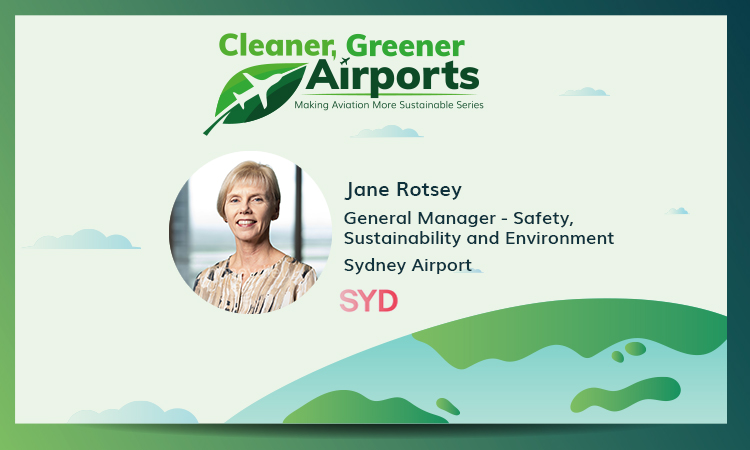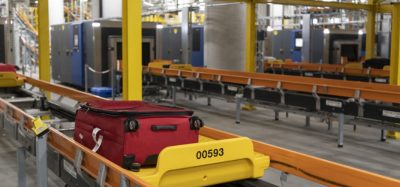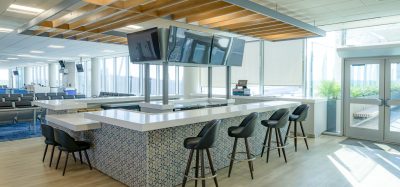Cleaner, Greener Airports: Making Aviation More Sustainable – Sydney Airport
- Like
- Digg
- Del
- Tumblr
- VKontakte
- Buffer
- Love This
- Odnoklassniki
- Meneame
- Blogger
- Amazon
- Yahoo Mail
- Gmail
- AOL
- Newsvine
- HackerNews
- Evernote
- MySpace
- Mail.ru
- Viadeo
- Line
- Comments
- Yummly
- SMS
- Viber
- Telegram
- Subscribe
- Skype
- Facebook Messenger
- Kakao
- LiveJournal
- Yammer
- Edgar
- Fintel
- Mix
- Instapaper
- Copy Link
Posted: 7 May 2021 | Jane Rotsey | No comments yet
In the next instalment of International Airport Review’s exclusive series, Jane Rotsey, General Manager – Safety, Sustainability and Environment at Sydney Airport, states how, despite the uncertainty and challenges presented by the pandemic, the airport’s commitment to sustainability held fast.


In 2020, every aspect of Sydney Airport’s (SYD) business was challenged; our way of operating changed and many tough decisions had to be made.
A summer of devastating bushfires was followed by the COVID-19 global health crisis. Through this, we maintained a steadfast focus on keeping the airport open”
A summer of devastating bushfires was followed by the COVID-19 global health crisis. Through this, we maintained a steadfast focus on keeping the airport open, keeping our people and passengers safe and serving our community.
Through this process, we had an opportunity to recommit to the things that matter. Some priorities are so core to your values that you stay the course irrespective of challenges. Despite the disruptions of 2020, our commitment to the long-term sustainability of our business remained unchanged.
Over the year, our leadership in sustainability was again recognised by global ratings agencies in 2020. We ranked third globally in Sustainalytics’ Airports sub-industry sector, as sector leaders in S&P Global’s Sustainability Yearbook 2021 and were rated ‘AAA’ by MSCI.
Continued commitment to transparency
As a listed company, each year, we report on our sustainability performance to the market via the Australian Stock Exchange.
Our report measures performance against our commitments and the material issues under the three pillars of our sustainability strategy – responsible business, planning for the future and supporting our communities.
We were the first airport in the world to become a supporter of the Taskforce on Climate Related Financial Disclosures (TCFD), a set of voluntary disclosures which inform investors and other stakeholders about a company’s climate change risk management. We have reported in line with the TCFD framework since 2018 and, in 2021, published our first standalone TCFD Report. This report provides an overview of our climate change governance; our climate change scenario analysis; how we assess and manage climate risk; and the potential impact of climate change to our business.
Our 2020 Sustainability Report provides a comprehensive review of our performance in the year. Despite the challenges that we faced, we continued to improve our sustainability performance in a number of key areas”
We released our first Modern Slavery Statement in 2020, in line with new Australian legislation requiring companies to disclose how they manage modern slavery risk in their operations and supply chain. Sydney Airport did not identify any instances of modern slavery associated directly with our operations or through sourcing-related risk assessments in relation to our supply chain during 2020. We will not do business with individuals or companies that knowingly profit from modern slavery.
Our 2020 Sustainability Report, released in February 2021, provides a comprehensive review of our performance in the year. Despite the challenges that we faced, we continued to improve our sustainability performance in a number of key areas.
Creating a COVID-safe environment
Throughout the pandemic, Sydney Airport has remained open and fully operational, continuing to provide essential aviation and supply chain services between Australia and the world and committing to keeping the people working and travelling through the airport safe.
Our priority has been ensuring a COVID-safe environment for our people and passengers to minimise the risk of community transmission of COVID-19″
Our priority has been ensuring a COVID-safe environment for our people and passengers to minimise the risk of community transmission of COVID-19. New procedures were introduced, and our teams worked closely with government agencies to implement constantly adjusted protocols for the safe passage of arriving, transiting and departing passengers.
We played a key role in facilitating travel to and from Australia during the crisis, carrying more than 50 per cent of all passengers repatriating to Australia through Sydney Airport, and many foreign nationals heading home.
In a testament to the efficacy of our systems, early in 2021, Sydney Airport achieved Airports Council International’s (ACI) Airport Health Accreditation (ACA) following an assessment of health measures rolled out across our terminals against global standards.
Safety and mental health
Our safety performance improved in 2020, with both the number of Lost Time Injuries and the Lost Time Injury Frequency Rate (LTIFR) for employees falling. The number of injuries across our workforce also reduced by 43 per cent.
We expanded our focus on mental health as we worked through the challenges of a changing work environment and the strain of the COVID-19 pandemic”
We expanded our focus on mental health as we worked through the challenges of a changing work environment and the strain of the COVID-19 pandemic. We introduced three days of Wellbeing Leave for all staff from 2021, designed as a preventative measure to support health and wellness.
We also provided mental health training to our people, with a focus on upskilling leaders to support their teams, and introduced mental health first aid training. Our accredited Mental Health First Aiders are available to offer support to both staff and visitors to the airport, noting the ongoing effects of the pandemic on our people and the wider community.
Diversity and inclusion
Sydney Airport is committed to building an inclusive workplace that celebrates the diversity of our workforce.
In 2020, we achieved a gender pay ratio of 99.8 per cent and, for the first time, our leadership team has 50:50 male/female representation”
In 2020, we achieved a gender pay ratio of 99.8 per cent and, for the first time, our leadership team has 50:50 male/female representation.
In February 2020, we were proud to be the first hello for everyone travelling by air to Sydney to experience the Sydney Gay and Lesbian Mardi Gras. To celebrate, the arrivals areas across our terminals were painted ‘rainbow’, and more than 80 of our people and their families joined Sydney Airport’s first float in the Mardi Gras parade.
Sustainable finance
Our leadership in sustainable finance continued with the issuance of a world-leading $600 million Sustainability Linked Bond in February 2020. This bond issuance was the first of its kind in the U.S. private placement and global bond markets and follows our $1.4 billion Sustainability Linked Loan in 2019, which established a direct two-way link between our sustainability performance and funding costs.
Carbon neutral by 2025
We continue to reduce our emissions footprint and remain committed to our target to be carbon neutral by 2025 in line with the Airport Carbon Accreditation programme. In 2020, we maintained our ACA Level 3 ‘Optimisation’ accreditation.
Progress towards our target to achieve a 50 per cent reduction in emissions per passenger by 2025 from a 2010 baseline was temporarily affected in 2020 due to the sharp reduction in passenger numbers”
Progress towards our target to achieve a 50 per cent reduction in emissions per passenger by 2025 from a 2010 baseline was temporarily affected in 2020 due to the sharp reduction in passenger numbers. While our absolute emissions reduced, our emissions intensity increased as the airport remained open and operations continued.
We also deepened our scenario analysis in 2020 and updated our climate change resilience strategy to focus on four key areas: energy efficiency and carbon reduction; asset adaptation and future proofing; business resilience and carbon neutral growth; and advocacy for a low carbon economy.
Sustainable airport design
Sydney Airport’s Sustainable Design Guidelines were developed in 2020, which set requirements that will improve our sustainability performance and the long-term resilience of our assets to the impacts of climate change. The requirements cover areas such as climate change, energy efficiency, waste and water management and responsible sourcing. The Guidelines align with our Master Plan 2039, and sustainability frameworks including the United Nations (UN) Sustainable Development Goals (SDGs), Green Building Council of Australia Green Star Communities and Green Star tools for building design, construction and performance.
We continued to optimise our airfield with the conversion of existing layover bays to active bays fitted with ground power and preconditioned air. Importantly, this means that aircraft at these bays can switch off auxiliary power units and plug in to this infrastructure, reducing emissions and ground-based noise.
Waste management
Our organics collection programme was expanded in 2020 to domestic terminals following a pilot programme in 2019. We also updated our technology asset disposal process to include requirements to divert waste from landfill and incorporate resource recovery into the contract with our service provider.
We concluded stage one of a project to resurface the main north-south and east-west runways and associated taxiways in 2020. By the end of the year, more than 24,700 tonnes of pavement material was removed. One hundred per cent of this has been recycled for reuse in either suitable asphalt mixes or to produce a recycled road base.
Supporting our communities
While financial contributions in our community investment programme were down in 2020 given the impact of COVID-19, our people volunteered more time than ever before. From collecting donations for bushfire-affected communities and mentoring young people, to donating their skills to charitable organisations, our people made significant and selfless contributions to the community.
Stakeholder engagement
Together with governments, airlines, our commercial partners and the community, we continue to navigate the challenges presented by the COVID-19 pandemic and are on a path to come out the other side stronger for it.
Our experiences in 2020 reinforced the importance of strong relationships with our many and varied stakeholders. We worked closer and harder than ever before to build stronger relationships while pursuing our shared commitment to sustainability.
Looking forward
The challenges of 2020 have only reinforced our commitment to sustainability, and we recognise the role that its performance plays in the long-term value of the company”
The challenges of 2020 have only reinforced our commitment to sustainability, and we recognise the role that its performance plays in the long-term value of the company. We will continue to invest in understanding and building resilience across all aspects of our business to meet any challenges that the future may bring.
The COVID-19 pandemic has taught us the importance of Sydney Airport remaining a strong and sustainable business, one that is committed to providing a safe and reliable aviation gateway to the people of New South Wales (NSW), Australia and beyond.
Jane Rotsey is responsible for safety, sustainability and environment at Sydney Airport, and works collaboratively with all on-airport business partners to drive performance, ensure continual improvement and meet or exceed legislative and regulatory requirements. Maintaining a priority focus on these areas is key to satisfying customer, community, government and investor expectations. Before joining Sydney Airport, Rotsey worked in the field of strategic communications and issues management across the business, finance, government and community sectors.
Related topics
Airport Carbon Accreditation (ACA), Airport crisis management, Airside operations, Cleaner, Greener Airports: Making Aviation More Sustainable Series, COVID-19, Emissions, Passenger experience and seamless travel, Runways and pavements, Safety, Sustainability, Sustainable development, Terminal operations, Workforce
Related airports
Related organisations
Airports Council International (ACI World), United Nations (UN)

















